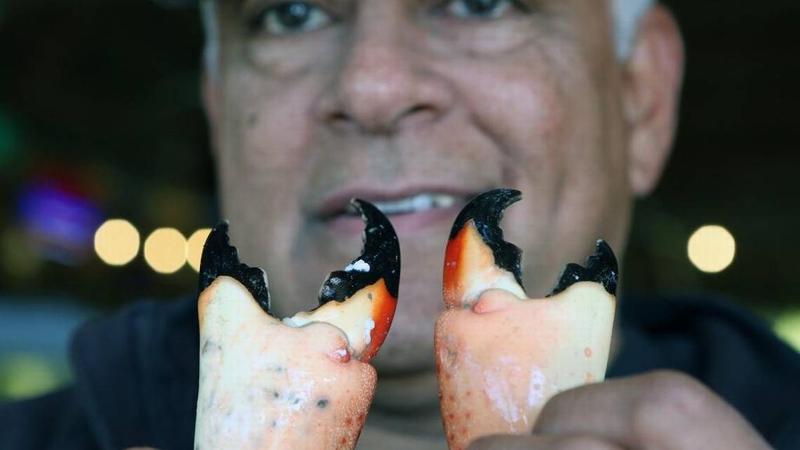Less than halfway through Florida’s lucrative stone crab season, traps are drying up, dealing another blow to a fishing industry still recovering from a beating delivered by a brutal Hurricane Irma.

Everybody’s feeling it,” said Walter Flores, owner of the Golden Rule Seafood in Palmetto Bay, which has been selling and serving stone crabs since 1943. Normally Flores starts taking orders for holiday crabs about now. But this year, he said, it’s first come, first serve.
“We have them,” he said, “but you have to offer more money to get them. It’s almost a bidding war.”
Medium claws that sold for about $19 a pound last year are now going for $26.99, he said. Large claws are pulling in $45 a pound.
Read more at our news partner, the Miami Herald.
Scientists study rapidly diminishing stone crabs
Florida’s recreational and commercial stone crab claw harvest season opened this month in state and federal waters with high expectations.
The fishery however, has seen more ebbs than flows over the last decade due to a kaleidoscope of challenges.
Since 2000, the annual commercial stone crab landings have declined on average by 20-25%, with the 2013-2014 season recording historic lows. Preliminary numbers for the 2016-17 season show totals of approximately 2.9 million pounds with a value of $30.6 million.
The significant decline in annual landings since 2000 is concerning for the fisheries future sustainability.
Mote Marine Laboratory’s Dr. Philip Gravinese is studying the coveted crustacean (i.e. stone crabs) to determine how to better sustain the fishery by gaining an understanding of the stone crabs tolerance to ocean acidification and low-oxygen levels.
Gravinese recently published a paper titled, “Ocean acidification impacts the embryonic development and hatching success of the Florida stone crab, Menippe mercenaria,” which will be featured in the Journal of Experimental Marine Biology and Ecology.
In this study, Gravinese shared how acidic pH levels effect the gestation and hatching success of the stone crab. He chose stone crabs as his species of choice because little is known about how this species, which plays a significant role in the local blue economy, is affected by environmental changes.
“Much like other fisheries, we need to determine what factors may negatively affect the population. Many do not realize that anthropogenic influences like land-based runoff in nearshore ecosystems can reduce the seawater pH which in turn may pose challenges for stone crabs to complete development, regulate their physiology, or even survive,” shared Gravinese. “We are not sure what the stone crabs’ tolerances are to some of these changing environmental conditions which is concerning considering the reduction of stone crab landings.”
In Gravinese’s most recent study he observed that stone crab embryos may not have the physiological ability to tolerate the extreme shifts in pH forecasted for future oceans. This conclusion came after maintaining egg-bearing female stone crabs in environments characteristic of both present-day and reduced seawater pH. Lower pH significantly lowered the rate of embryonic development (i.e., time to hatching) by ~ 24 percent, but had no effect on the size of developing embryos (i.e., embryonic volume). Larvae that successfully hatched were not morphologically different between treatments, although hatching success was reduced by 28 percent in lower pH seawater. Hatching success was also varied in the reduced pH treatment indicating that some broods may be more tolerant to changes in seawater acidity.
Gravinese is now conducting additional studies to identify how other factors may be impacting stone crabs including an experiment that will determine how tolerant stone crabs are to red tides, and how claw breaks may affect a female stone crabs diet and reproduction.
“The question regarding how one or two claw breaks impacts a female stone crab’s diet and reproduction came up in a stone crab advisory council meeting,” stated Gravinese. “We know their diet changes with the number of claw breaks, but we were surprised that we didn’t have an answer in regards to the energy invested toward regenerating a claw vs. energy invested toward embryo development. Local fishermen also reported seeing lethargic stone crabs in their traps around red tide events. We are now trying to determine what red tides may mean for the fishery. It’s these types of questions I am excited to answer in hopes that fisherman, conservations, and the community at large can work together to responsibly manage this fishery.”
